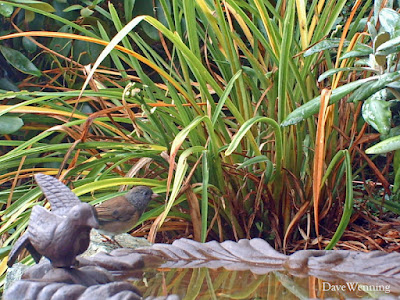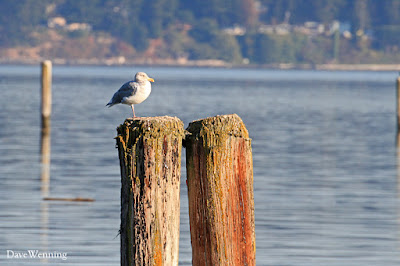Holiday Eagles

December has been mostly wet and dark, not great conditions for wildlife photos. Finally, a pair of Bald Eagles came calling this morning. Literally. I can always tell when they stop by from inside the house. They chatter to me, "Hey Dave, come out and take our picture." From the ground, I didn't realize there were actually two eagles perched in the tree. Can you spot the second one behind the foliage? Their perch was about 70 feet (21 meters) above the ground and roughly 125 feet (38 m) from my position. When the eagle took off, I managed to get one quick shot. I realized there were two only after the second one followed. I am fortunate to have two hunting perches, one on each side of the yard. The birds use them to spot fish out in Skagit Bay. They also use them as loafing perches where they can just hang out for a while. I think that's what was going on today.














